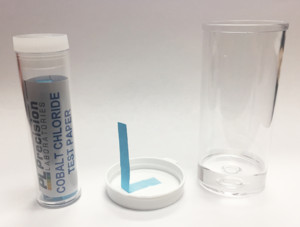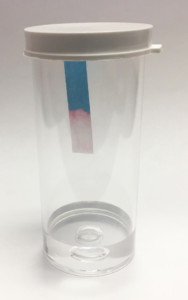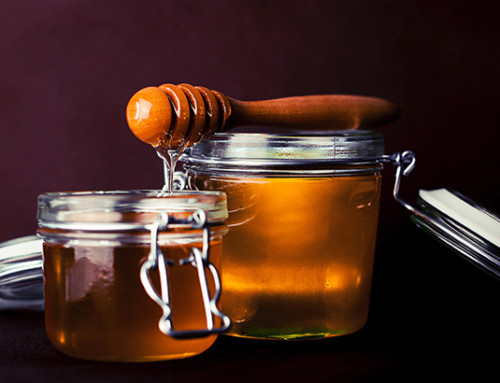Winter can be an especially dry time of year, drying out your skin, hair and mucous membranes. This is why your skin get can itchy, your hair full of static, and your throat scratchy or your nose dry and cracked. In other words, we all get a little uncomfortable, and it’s an uphill battle to stay moisturized.
Winter air is cold and dry with a lower humidity level. This is because warm air is less dense than cold air, so there is more room for water vapor in the warm summer air. To make matters worse, we also blast warm, dry air into our homes and offices.
Aside from greasing up with lotions and oils and taking hot baths, one common way people try to find relief is by running a humidifier in their home. Humidifiers add water vapor to the air to increase humidity. Typically, a warm mist humidifier heats water to boiling until it vaporizes, and heat energy then helps move the moisture throughout the room. They are often placed in common areas like living rooms, or bedrooms where we sleep at night.
But, can humidifiers result in too much moisture? We know mold likes to grow in dark, moist spaces, so do we have to be careful with how much we use a humidifier? Let’s perform an experiment to measure humidity levels in the home.
Materials
- 3 Sealed, clear containers
- Calcium chloride (CaCl2)
- Water
- Cobalt chloride test strips
- Tape
Procedure

- Each container represents a home, so let’s create their environments.
- Add a small amount of water to the first container, or home, tape a strip of cobalt chloride test paper to the lid, and seal it shut.
- Add a small amount of Calcium chloride to the second container, or home, tape a strip of cobalt chloride test paper to the lid, and seal it shut.
- In the third container, or home, there should be nothing added. Tape a strip of cobalt chloride test paper to the lid, and seal it shut.
- Keep the sealed containers upright. Do not open the vials for any significant amount of time or the moisture in the air will react with the environment and the cobalt chloride indicator strips.
- Let’s pretend that one house has a humidifier, one house has a dehumidifier, and one house is just its natural environment. Let’s see if we can determine which “house” is which using the Cobalt Chloride test paper.
- First, look at the container with a drop of water in the bottom. Do you notice any moisture or condensation building up within the container? What color is the cobalt chloride test paper? Based on your observations, which house do you think this is?
- Next, look at the container with Calcium chloride. What color is the cobalt chloride test paper? Which house do you think this is?
- Lastly, let’s look at the empty container. What color is the cobalt chloride test paper? Which house do you think this is?
- Record your observations in your laboratory notebook. Now, let’s take a 5-minute break.
- After your break, return to the “homes” to observe them one more time. Have any of the cobalt chloride test strips changed color any further?
- Now, let’s try changing the lids of the homes to a different home to see how the strips react. For example, let’s take the lid of the calcium chloride home, and put it on the lid of the water droplet home. Take another break, and after you return, observe the color of the cobalt chloride test strip. How did it react?
Take-aways
 Humidity is typically measured as percent relative humidity, which compares the amount of water vapor present in the air to the maximum amount of water that the air could contain. Our test paper is responsive to 50% relative humidity and above. In a low humidity environment, the cobalt chloride test strips are blue in color. At moderate humidity, the paper looks somewhat purple, and at a high humidity, the strip will turn light pink to white.
Humidity is typically measured as percent relative humidity, which compares the amount of water vapor present in the air to the maximum amount of water that the air could contain. Our test paper is responsive to 50% relative humidity and above. In a low humidity environment, the cobalt chloride test strips are blue in color. At moderate humidity, the paper looks somewhat purple, and at a high humidity, the strip will turn light pink to white.
Therefore, the strip in the home containing water should have turned light pink to white. This was the home with the humidifier. The strip in the home containing the drying agent, Calcium chloride, should have remained blue. Calcium chloride absorbs moisture, keeping the air in the container dry. This is the home with the de-humidifier. The color of the strip in the empty home will depend on the natural environment in your area. It may have stayed blue, turned purple, or turned pink.
Cobalt chloride test paper can also be reversible. If they are exposed to humidity, but then the surrounding air dries, the paper will change back to its original blue color. Therefore, when the lids of the wet and dry containers were switched, you should have seen a color change on both strips.
Going Further
To really observe the effect that humidifiers could have on a home, fill a few containers with different amounts of water. Follow the same procedure of taping a strip of Cobalt chloride test paper to the lid, and let it sit for a while. Is the paper color different depending on how much water is in the container?
You could also try using our Humidity test strip, which measures, 20, 40, 60 & 80% relative humidity. This may take up to 15 minutes to react completely. Similar to the cobalt chloride test paper, each pad is blue and will turn purple to pink according the moisture in the air. The process is also reversible.







Leave A Comment